Equity File 760 of 1892 for Merchants Mutual Fire Marine Insurance Coy Ltd. Released by Qld State Archive CC BY <http://www.archives.qld.gov.au/Researchers/Indexes/Courts/Pages/Equityfiles.aspx>
The Queensland Government has recently released two strategic reports that emphasise the future agenda for open data in this state.
After public consultation, in December 2013 the government released a working draft of the Queensland 30 year vision (PDF) for comment.
The governance section of the plan highlights the need for localised and more flexible decision making and the government states it will be successful if it is responsive, open and transparent in decision making. To achieve this it will provide progress reporting and open data initiatives to promote openness and transparency (p.26). Secondly the government will ensure interaction between citizens and government are streamlined, timely and free of duplication.
There is also a lot of mention in the plan of collaborative processes of development and responsibilities for outcomes will be collaboratively shared between government, communities, regions, industry and business. Hopefully open data and transparent sharing of inputs will underpin such collaborations.
More details are on the Queensland Plan site: http://www.queenslandplan.qld.gov.au/
A second recent report of interest is Queensland Government Science and Innovation Action plan. The plan includes the following: deliver the release of public data to encourage economic growth, innovation in government service delivery and improved transparency in government; maintain the momentum of economic growth by providing access to data generated by industry (p.14); coordinate a suite of innovation in government tools to help improve the quality and efficiency of government service delivery, and; create and implement an innovation portal to engage industry and the community in developing innovative solutions to service delivery challenges.
You can read more on this at: https://www.qld.gov.au/dsitia/initiatives/science-innovation-action-plan/
Anna Gerber (an OKF Brisbane Ambassador) recently presented on a panel at the Queensland Government Open Science day and a video of the panel will be available soon. At least 120 people (that I counted) attended and during the day the Queensland CIO, Andrew Mills, launched the Government Science open data competition. The competition is underpinned by the aims of the State open data initiative to (a) encourage people, companies, researchers and non-government organisations to develop innovative solutions to Queenslanders’ problems and (b) help make government more transparent and accountable.
Thirdly, the Queensland Digital Economy Strategy will be released soon. The draft strategy was released for public comment and included a desired outcome of “customer-centric government through digital innovations in open data, digital records, and crowdsourcing policy inputs,” “digitally open up and increase access to the State’s cultural and tourism assets“… and “work in partnership with industry and community organisations to better communicate the importance of the digital economy to improving Queensland’s productivity and long term economic future” (p.12). There’s a clear pattern of open data and collaborative decision making in all three reports.
It appears to me that local, state and federal governments hear and understand the need to open their data, have policies in place and are now working actively on strategic implementation, or the ‘how’ of opening what data. These two reports clearly signal that open data will be a key indicator of accountability for the government. OKF Ambassadors have met and hope to work with various governments here in Queensland to assist with enabling open government data with the outcomes of increased transparency and accountability here. So far the Queensland state government has released 705 datasets, including everything from the excellent GOMA artworks to DSITIA biogeographic subregions and departmental late payment fees. We’re watching, helping and counting! And we’re looking forward to reusing this data!
